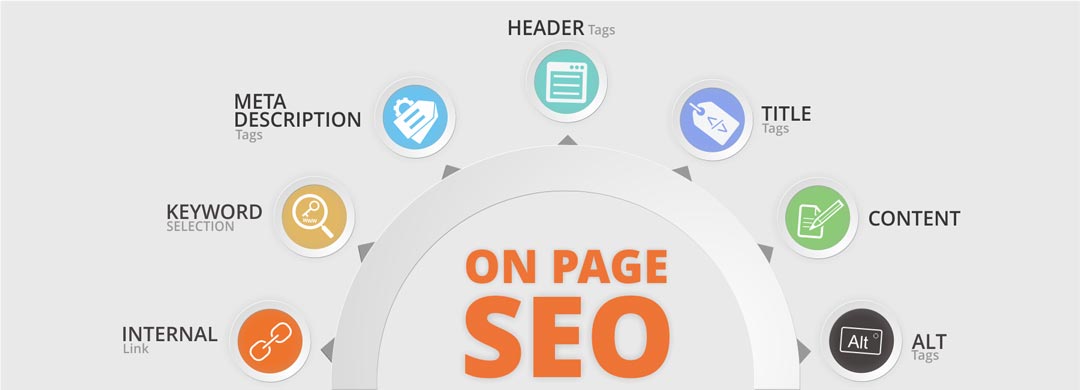What is SEO?
There isn’t anything more important to digital marketing than SEO, something that might still mystify you in its ongoing complexity.
Mostly we solve 90% of our questions by taking out our smartphones from our pocket and using our favourite search engine (Google in 90% of the cases) to search for the answers. Naturally, I believe that the top results which Google feeds me are the ones relevant to me. And we shouldn’t lie to ourselves by saying that this isn’t true because the top 5 results in Google Search Engine Results Page (SERP) get 89% of the clicks for any search.
So you get my point where I’m going with SEO and why it’s so important for you personally and for businesses. Ranking on Google from SEO denotes whether a business is performing well or not. Obviously, the ones which get discovered, are the ones which reap most of the profits.
- But what is SEO (Search Engine Optimization)?
- What kind of optimization?
- It has become kind of a buzzword lately.
According to Wikipedia, SEO is “the process of affecting the visibility of a website or a web page in a search engine’s unpaid (organic) results”.
Wait, Wait!!
According to me, SEO is the process of optimizing your content and your website in such a way that search engines show it as a top result for searches of a certain keyword.
That’s better. But let me explain further:
I write a blog on Digital Marketing. So my goal is to focus my content around the keyword ‘Digital Marketing’ and make sure that Google displays my blog at the top, whenever somebody searches for Digital Marketing. This is the whole purpose of SEO.
Many of you might be thinking, why is it so overrated then?
It has to be, because if people don’t discover your website, then guess what?
They won’t visit your website and you will be left with very few visitors. Therefore, it seems simple but is very important for your website and for your online business.
Why Google focuses on quality content and SEO?
It’s because of its business model. If Google doesn’t provide the best results, searchers will have bad experiences. And if people have a bad experience, they won’t visit those pages more often which will lead to the decrease in their Ad revenues which they generate from websites.
So it’s that simple. Increase visitors by providing the best results, increase your revenue. Win-Win for all.
To understand how to rank better, you should understand how the search works.
While Google hasn’t revealed its algorithm and nobody completely knows about it, Backlinko did a great job of compiling as many as possible.
Everything has a dark and a bright side to it. SEO has it too. There are mainly three ways to perform SEO:
-
Black hat SEO (Using unethical ways)
-
White hat SEO (Using ethical ways)
-
Gray hat SEO ( Mix of black and white SEO)
No doubt I’ll be talking about the white hat methods as I don’t want my website to be blocked by the search engines. Black hat SEO can help you for days or even weeks, but, Google has gotten very smart at detecting spammy pages and will stop crawling your web page because it wants its readers to have a quality experience online.
There are 2 categories of SEO:
On-page SEO deals with the things which you control and can do to your pages such as headlines, keyword oriented content and website structure.
Off-page SEO deals with the factors which are not so much under your control such as Social Media shares and personal history of searchers.
You can’t just do one of these methods because you have to get both of them right in order to do well with SEO.
Let’s say you have the best content writers in the world (on-page SEO) and you are publishing one article a day. But, somehow it doesn’t get shared on social media (off-page SEO) and people are unable to discover your content. Even having the best content in this world will not get you to the top position. Now it may be clear to you that both on-page SEO and off-page SEO have to be done simultaneously to be at the top of the SERPs.
More about On-Page SEO:
1. Content
If your content sucks, there’s no way it will be on top of the results, no matter how much SEO you apply. So, for great results, you have to create great quality content and apply good SEO skills at the same time. When you search for something, Google tries its best to feed you with the most relevant and high-quality content to you. Because if it doesn’t, people won’t be satisfied with the search experience.
So your main goal should be to provide as useful and relevant content as possible so that Google finds it as a result that should be displayed.
But what does a great content comprise of? Here are some ingredients that make up a great content.
Quality
I know it’s hard to come up with quality content consistently. But, you can do so by using statistics in your content, using visuals and pictures, using videos and many other things to make your content look rich.
Provide a detailed step by step guide for something you know. Keep user’s problem in mind and just try to provide the best solution you think can be relevant to the user. Over time, this will help you maintain trust and authority with your audience.
Keyword Research and use of Keywords
Doing the keyword research before writing anything in your article is vital.
You need to write the keyword in your headlines and body of the article. So it is important that you research your targeted keyword well before you start writing anything in your article because this content will be served to the user who types in the keyword in the search box.
If you’ve never done keyword research before, you might want to take a look at Hubspot’s guide for beginners.
Earlier, people used to just unnecessarily concentrate keywords throughout the body of the content (keyword stuffing) to fool the search engines. But Google has developed ways to mark this as low-quality content and black hat method for SEO. So I would recommend you to use keywords in your headlines and body of your article but, use it naturally wherever needed. Don’t use it to just stuff your article with a bunch of keywords as it will decrement your page rank.
Once again, I would say that the purpose of SEO is not to just get on top but to also provide relevant and quality content to people looking for the answers to their questions. Focus on people more than you would on search engines.
Freshness of content
Posting more content frequently does improve Google ranking. You don’t always have to come up with something new. Changing your older content and links on your website can also act as fresh content. But remember, changing the content too often may also degrade your website’s SEO as it will lose its credibility.
My advice would be to create new content consistently and add some relevant data or news to your older posts that you just found and haven’t mentioned there.
It’s not as if you have to post regularly for the best SEO results. You can even achieve that by posting once a month as long as your content is detailed and provides an in-depth knowledge wich is updated frequently.
Direct answers
A recent update from Google provides your content as an answer to a question asked by the searcher if your content is written clearly and provides a solution.
You can definitely improve your web page’s position by taking advantage of this feature by providing real answers to people’s questions through your content.
2. HTML Tags
You should definitely know HTML but you don’t need to understand everything about it. Only the HTML tags which affect the SEO of your website should matter to you.
There are 3 important ones you need to take care of:
Title tags
These act as headlines for your blog posts and are also called as h1-tags. These are the headlines which make it clear to search engines what the post is all about. Every page of your blog should only have one title tag or else there will be ambiguity for the search engine.
These headlines are displayed on the tab of your browser whenever you open up a web page and that is the reason you have to get it right.
Meta Description
This is an excerpt which appears below the URL of SERPs. If you don’t exclusively specify what this description should be, Google will automatically display some content from your article. But this can be counter productive sometimes and you can lose control of your visibility. I would recommend you to come up with a short description which will explain what your website or blog is about and also intrigue users to click on the link.
I would recommend you to come up with a short description which will explain what your website or blog is about and also intrigue users to click on the link.
The first meta description is appropriate while the second one seems incomplete because it ends with “…”.
Subheadings (h2, h3, h4, h5, h6)
They also affect SEO but not as much as title tags do but are necessary to create proper structure and readability of your content for your readers.
These tags are more often used to create a checklist for your readers which they can later refer to.
3. Architecture of Website
This part of SEO deals with the overall user experience of the website. You need to plan out the site architecture before setting up the website and I can assure you that this will be the best investment of your time.
By site architecture, I mean site structure, page load speed, security of your website and mobile friendliness.
The whole point of this step is to make it easier for your visitors to access your website. Because the more accessible your website is to search engines and to your readers, the higher it will rank. It’s that simple.
Some of the factors are:
Easy to Crawl
Spiders and crawlers are programs which traverse from one page of your website to another. This traversing is done with the ease of links present on each page. So the better the web of links, the easier it’ll be for Google to crawl your websites denoting this as a good result. This improves the UX of your website as the reader is able to visit every page of your website.
This is the reason people submit their website’s sitemap to Google using online XML sitemap generator.
Duplicate content
I talked about the freshness of content in the content part. That doesn’t mean that you need to come up with new content every time. You can also use your old posts and links and republish them if you think something more can be added.
This also doesn’t mean that you start posting the same content throughout the internet. Because this will be a signal of duplicate content to Google.
To handle this issue, use rel=canonical tags for links.
Mobile friendliness
With over 3.5 billion Google searches per day through mobile, let alone social media searches, you need to make your website mobile friendly as much as possible.
Because we both know that we don’t want to zoom in on those ugly websites designed only for Desktops (No government websites were harmed in this statement.
I have tested my blog and it’s pretty good. You can also do so by checking with Google’s tool and apply those suggestions which it tells you according to the status of your website.
Page Speed
You definitely know how important this is and how frustrated you were the last time that web page took more than 5 seconds to load.
Google uses this factor to rank your website because if your page is slow, it affects the UX (user experience) for customers and Google doesn’t want that.
Google has a tool to easily test this and you can check your website’s speed and also rectify on those suggestions which it provides.
Keywords in URLs
You can’t miss on this feature because including your targeted keywords in your URLs also improves SEO.
It’s majorly for human readability more than for search engines. But it’s effect is equal to that of using keywords in your title tags.
So try to create links which seem legit and reflect what the content is about.
Now Off-Page SEO
There are 5 major areas for off-page SEO:
1. Trust
Page rank algorithm is not the only thing Google considers while ranking your page.
Trustrank is a way for Google to see whether your site is trustworthy or not. This is the reason that quality backlinks to your site from authoritative websites increase your trust with Google and with your readers.
Trust is comprised of many factors such as
2. Authority
Authority of a web page is determined by its Domain authority i.e. the authority of the domain and Page authority i.e. the authority of the content on that page.
You can use this cheat sheet to increase your website’s authority without cheating.
3. Bounce Rate
It is defined as the percentage of visitors to a particular website who navigate away from the site after viewing only one page. Readers will spend more time on a website which has a good UI, great content and proper structure.
So you need this rate to be as low as possible. Quality content, page speed, and architecture of site are all the factors which reduce the bounce rate of a web page.
4. Domain Age
The older the domain, the better it is. Google sees older domains as more authoritative. So if you haven’t got a domain name yet, you can consider buying an older domain instead of going for the new one.
Doing this saves your work of starting from the scratch and developing the authority again.
5. Links
Backlinking to your website is not the only thing which improves SEO. It’s a part of SEO. So you need to work on it like you would work on other factors.
For the initial phase of your website, you can directly reach out to people with high influence in your industry and mail them to consider reading your content and backlink to your website if they like it.
Things you would consider for creating backlink:
1. Quality
The quality of backlinks will always dominate over quantity of them. It’s because Google’s algorithm doesn’t weigh the number of backlinks as much as it weighs the quality and authority of websites that link to your website.
For example:
Suppose you launch an innovative product which solves a particular problem. If some authoritative news website like Business Insider or Bloomberg provides a single link to your website, then, its effect on SEO will be much more than 10 usual websites linking to your website.
2. Anchor text
The text used to write on links is called anchor text. The natural the text seems on the backlinks, the better it is.
For example: You can either ask where do great blogging ideas come from? or write click here to do the same thing.
Use of natural text on backlinks improves SEO.
3. Number of links
This doesn’t mean that you just try to generate as many backlinks as possible. By the number of links, I mean that you should overtime time increase the number of backlinks from good quality sources. Increase the number of backlinks without compromising the quality of backlinks.
4. Personal Behaviour
These factors are mostly out of control and depend on personal things like the person’s search history and geographic location. Some are:
5. Country
Every person is shown the search results according to their specific location. Remember the Pizza question? Google won’t recommend me London’s Pizza Store while I’m in India. Also, the language and keywords of content would change according to the user’s location.
You can try to create country specific content but I wouldn’t recommend that as it may limit your reach of content.
6. Searcher’s History
If the person has visited your site before, your website is more likely to be ranked above the others. It’s because Google thinks that your website is the relevant result to the searcher.
Searcher’s social media behaviour also affects SEO. If the person likes or follows a particular brand on Youtube or Facebook, he/she will be shown the results from that brand and then it’ll be hard to compete with that.
7. Social Media
In the world where almost 2 Billion people use Facebook, Social media matters for your content and website and will decide whether it’s hot or not.
Many would say that the interaction of people with your content on social media is out of your control. But I do not believe so. You can reach out to Influencers of social media platforms (people with more than 1 million followers) in your industry and ask them to share and like your content if possible.
This has a great impact on your visibility and boosts your content.
8. Who shares matters
Who shares your content matters more than how often it is shared. Google detects who the influencer is and if your content is shared by many influencers, it’ll rank way higher than others.
You can use a tool called Topsy, and find influencers who shared a particular content and of which topic.
9. Number of Shares
It also affects the SEO and is responsible for your content going viral. The most important part to get a huge number of social shares is to post quality content and post it consistently.
You can check this guide on how to promote your blog and increase social shares without spending any money.
Conclusion
By now, you would have understood that SEO is not something to be overlooked if you are operating an online business or maintaining a blog.
I believe that you should focus on writing premium and detailed content for your readers and not just for Google. If your readers are satisfied by reading your content and visitors increase, it’ll definitely improve your SEO, and by focusing only on technical SEO rather than content will lead you to disaster.




